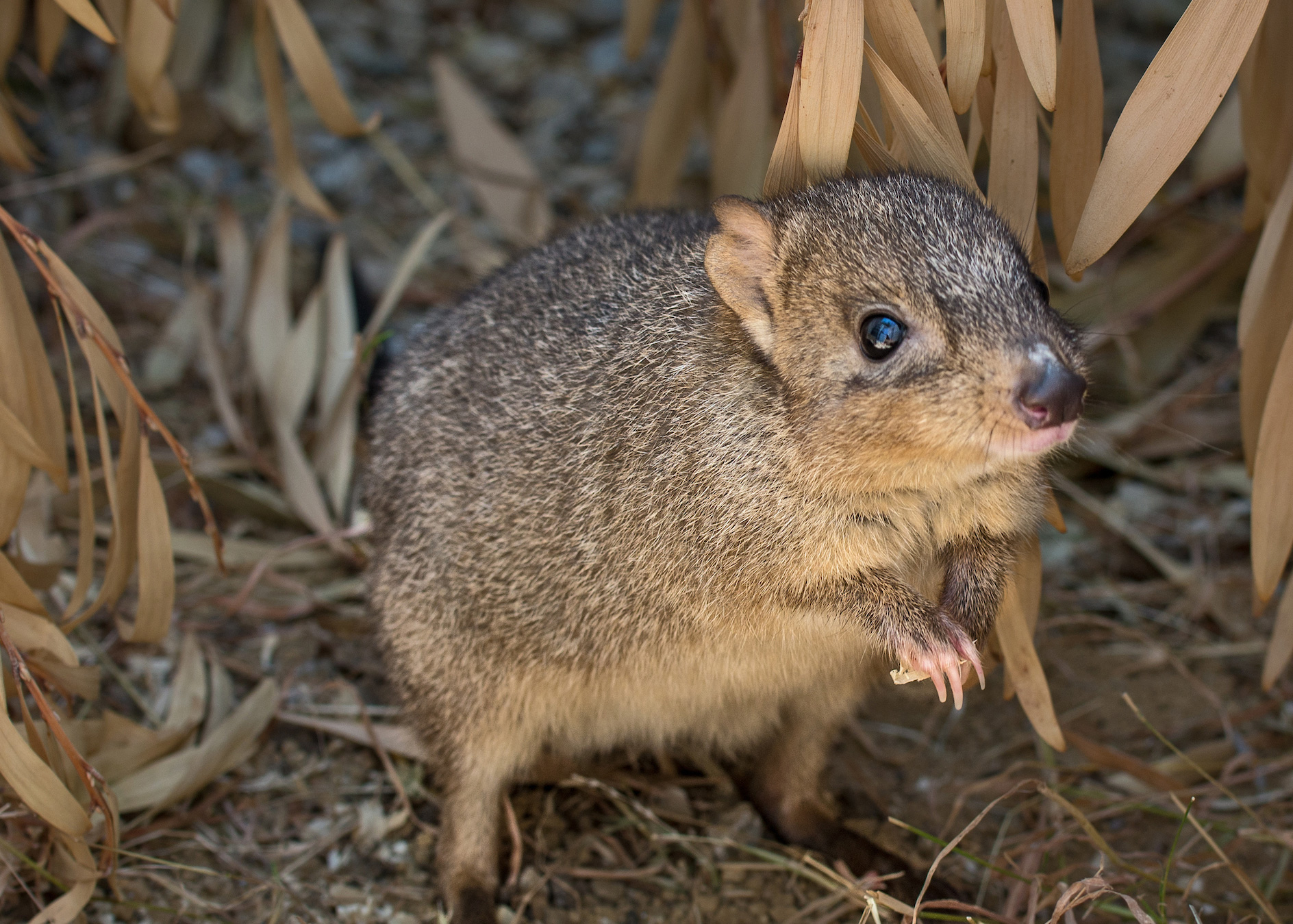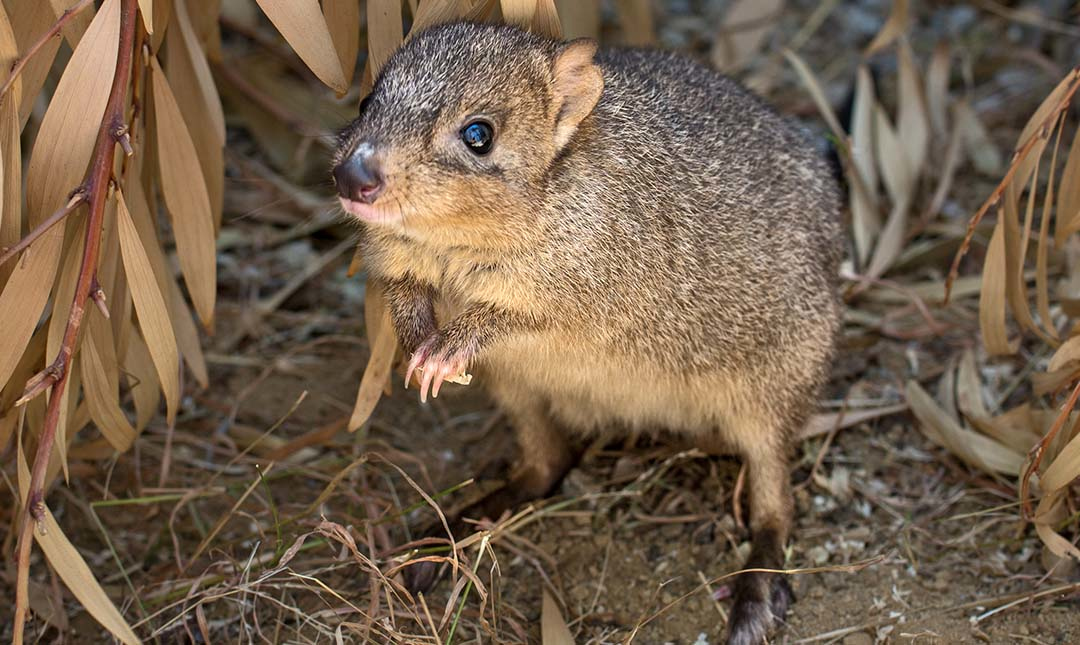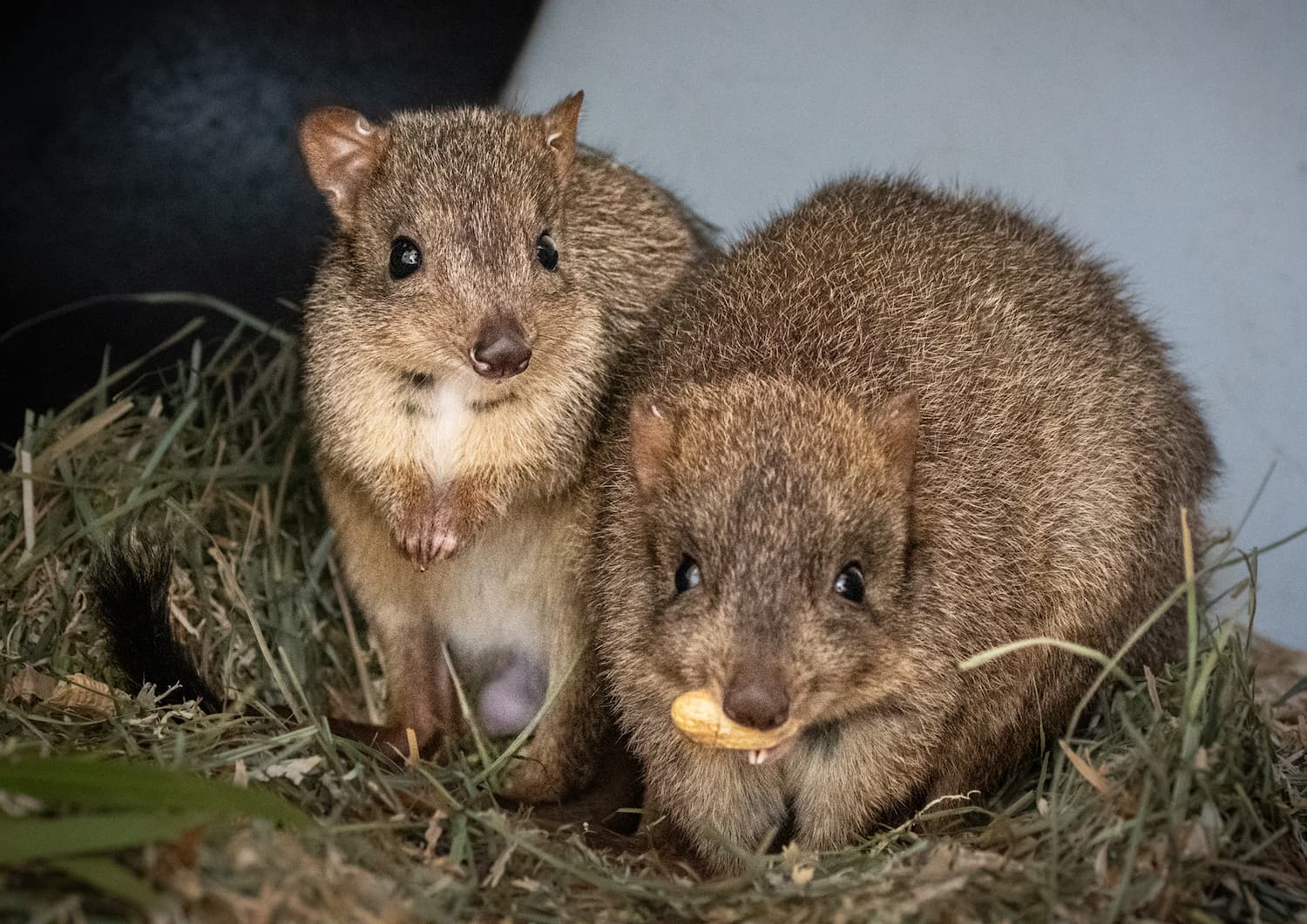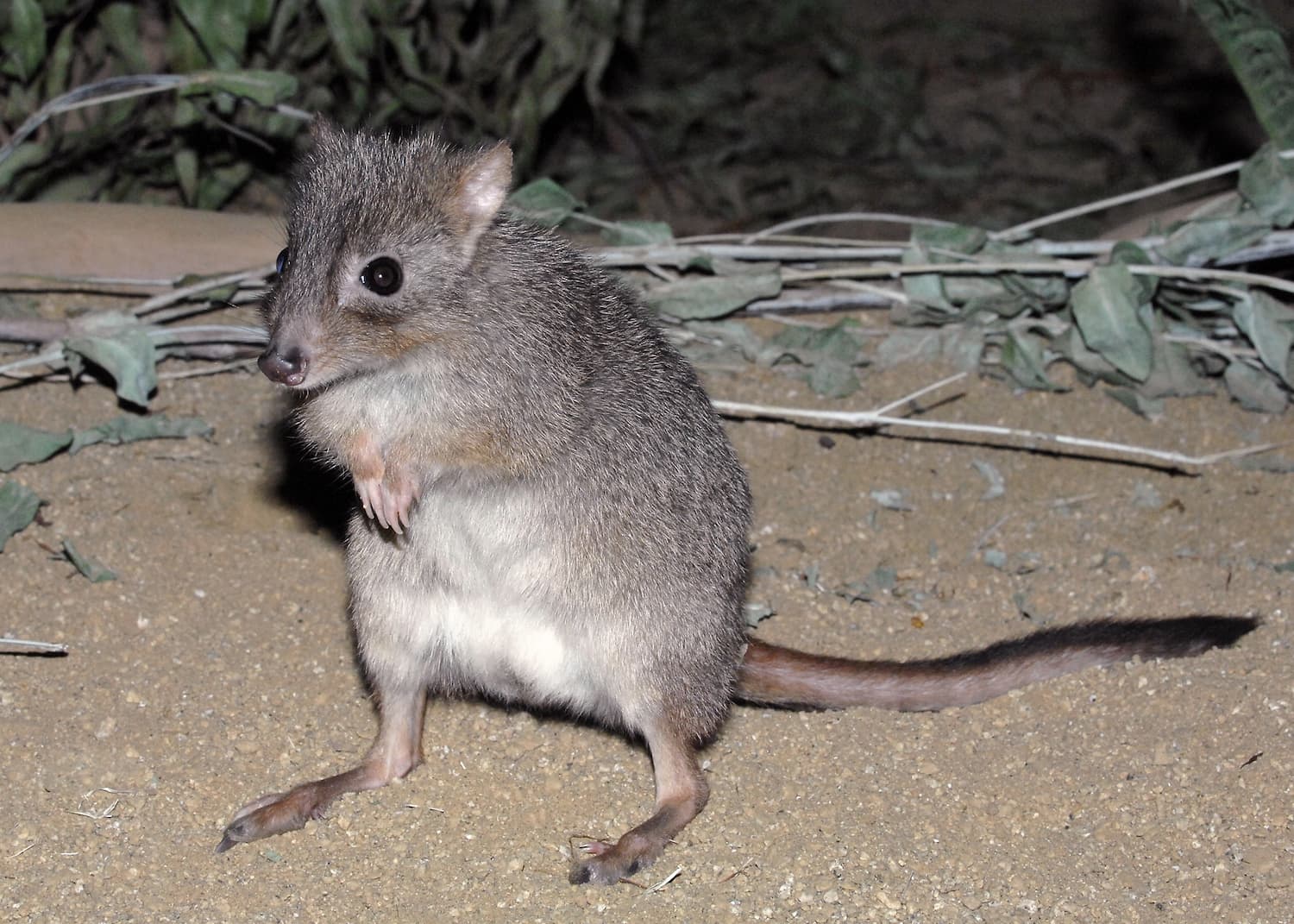About
Brush-tailed bettongs are named for a black tuft of fur that extends from their prehensile tails. They are a grayish-brown marsupial with a bare nose, native to Australia and known for digging front feet. The bettong’s extra-long hind feet are longer than its head and are used for walking; the animal is bipedal.
In the past, wild bettongs ranged throughout 60 percent of Australia; now, due to predation, disease, and lack of food, they are limited to a few nature preserves. Their numbers have been in especially rapid decline in the last 20 years, and conservation efforts are focusing with mixed success on decreasing predators and translocation, or, moving animals within wild habitats to areas where they can flourish.
Brush-tailed bettongs do not drink water. They also avoid green plants and focus mostly on eating fungus. Their food is discovered through their keen sense of smell. At night, they locate fungi underground, then dig it up with their front claws. An abundance of stomach bacteria helps break down the fungi and pull nutrients from it. Bettongs also eat bulbs, seeds, insects, and resin—a tacky substance similar to sap but produced only by pine trees.
Reproduction in bettongs takes place with the help of a marsupial pouch. Two offspring may be conceived at the same time, but only one will develop in the pouch at a time. The other will delay itself to give the first time alone in the pouch, then be born a few months later. Babies mature quickly and can produce their own offspring at six months. Bettongs nest at the bases of protective bushes with sheltering tendrils. They collect grass, sticks, and bark to form places for sleeping and rearing young.
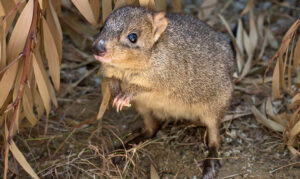
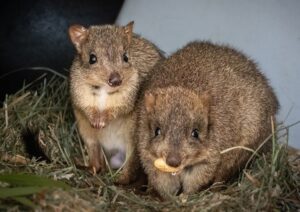
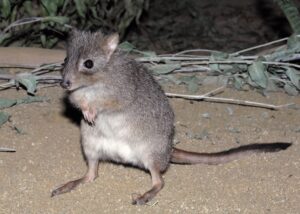
status
Brush-tailed bettongs are critically endangered in the wild.
habitat
The native range for brush-tailed bettongs is extremely limited. Due to their status as critically endangered, they live exclusively in forests, woodlands, and eucalyptus scrublands of nature preserves in Australia.
diet
Brush-tailed bettongs mostly eat fungus but also eat bulbs, seeds, insects, and resin.
physical characteristics
Brush-tailed bettongs are a grayish-brown marsupial with a bare nose, native to Australia and known for digging front feet. They’re named for a black tuft of fur that extends from their prehensile tails. The bettong’s extra-long hind feet are longer than its head. These small marsupials range in size from 11 to 18 inches in body length and have tails from 10 to 13 inches long.
LOCATION WITHIN THE ZOO
You’ll find this animal in the Australia section. See Zoo Map.

